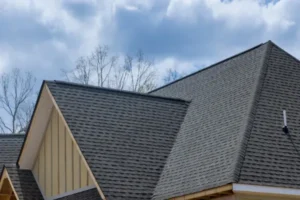How to Choose the Right Gutter Style for Your Roof

The right gutter style helps protect a roof and preserve a home’s structure. A well-designed gutter system moves water away from walls and foundations, reducing moisture buildup. The appearance of the gutter also adds character, improving the look of the roofline.
When homeowners plan gutter installation for roofs, they should focus on style, size, and material. Each factor affects how the gutters perform during heavy rainfall. A clear understanding of roof type, slope, and overall design ensures a seamless match that supports long-term durability.
1. Assess the Roof Structure
Every roof requires a gutter system that fits its shape and size. A steep or wide roof surface may demand larger channels to control water flow. Roofs with multiple slopes or edges sometimes benefit from additional downspouts to improve drainage.
Matching the gutter design to the roof lines prevents overflow and directs rainwater away effectively. The width and placement of each section should align with valleys and eaves. A balanced layout keeps both structure and landscape dry after a storm.
2. Review Gutter Shapes and Profiles
Different profiles influence both appearance and performance. Half-round gutters have a curved surface that allows smoother water flow. K-style gutters have an angular profile that complements modern homes. Box-style gutters hold a greater volume, which helps on roofs with larger surfaces.
Each shape serves a distinct purpose and adds to the home’s character. The selection depends on how water runs from the shingles and which design enhances the roofline. Consistency across all sides of the house ensures a unified finish.
3. Select the Material Type
The material of a gutter affects how well it performs and how long it lasts. Each option carries its own level of strength, weight, and appearance. Choosing wisely depends on how much maintenance the homeowner wants and how the gutter complements the roof’s design.
Before finalizing the choice, it helps to understand the unique qualities of each type:
- Aluminum for lightweight flexibility and rust protection
- Copper for long-term use and natural color change
- Steel for greater strength in areas with frequent rainfall
- Vinyl for easy setup and smooth finish
4. Examine Drainage Capacity
Drainage depends on both gutter size and downspout design. Wider gutters hold more water during storms, while narrower ones work better on smaller roofs. The pitch of each section controls how fast water moves toward the exit point.
A proper slope prevents pooling along edges and keeps rain from seeping into walls. Every connection, joint, and bracket must remain tight to avoid leaks. Balanced placement of outlets ensures smooth water release throughout the system.
5. Align Style with Budget and Maintenance
Budget planning helps define both material choice and installation approach. Cost sometimes depends on design complexity, roof height, and the number of sections. Simpler layouts reduce waste and make future repairs easier.
Maintenance also matters. Smooth finishes reduce debris buildup and simplify cleaning. Homeowners who plan ahead can avoid frequent upkeep while preserving the roof’s visual harmony. Long-lasting components keep the system reliable for many years.
Expert Help for Reliable Gutter Solutions
Selecting the correct gutter system can feel complex without proper guidance. Professional teams in this field offer precise installation, durable materials, and design options suited for every roof type. Their expertise ensures that gutters perform efficiently, maintain structural safety, and enhance curb appeal.
Consulting with specialists also saves time and prevents costly errors during setup. They evaluate roof slope, water flow, and home layout to create a system that fits perfectly. Working with experienced professionals delivers reliable protection and long-term value without unnecessary guesswork.
Gutter installation for roofs demands careful attention to design, fit, and material. A well-matched system directs rainwater efficiently and complements the roof’s structure. Thoughtful selection ensures lasting protection and a clean, unified look across the home.





